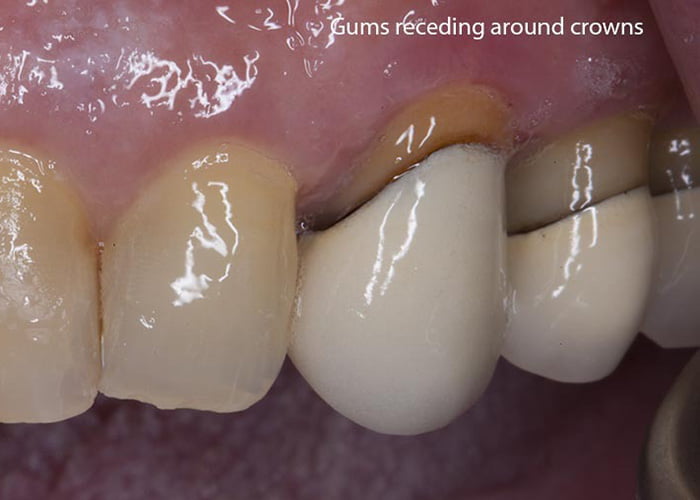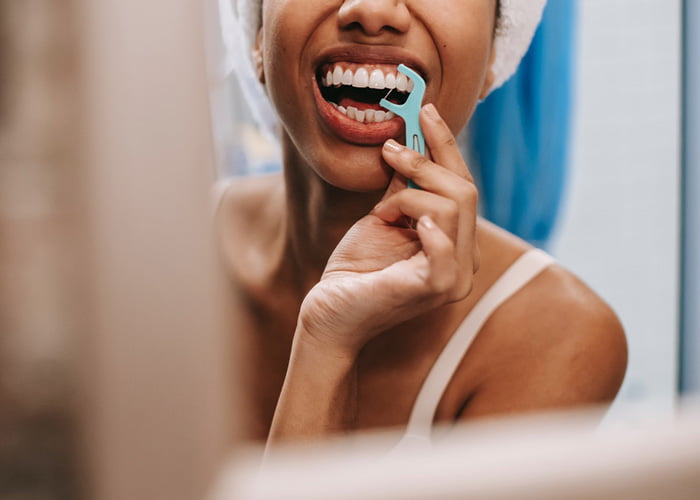Dental bridges make your grin more attractive and prevent the shifting of your other teeth. How do you maintain your dental bridges, though? The greatest method to prevent dental bridge problems is to take preventative measures.
When you need to replace missing teeth, dental bridges are a practical option. You may always smile with assurance. However, once you have this dental appliance, everything is not peaches and cream. Additionally, you need to be aware that different problems could appear out of the blue. The following issues could arise if you use a porcelain dental bridge.
Common problems with dental bridges’ collection of food debris
Traditional dental bridges are made to rest against the gum line of the patient. However, a difference between the two may result from a number of circumstances. resulting in the formation of a food trap where food waste might begin to gather. If you can’t properly clean it, bacteria and germs could start to grow in your mouth. Once it has occurred, the bacteria may result in poor breath and possibly gum disease.
Wearing out
Every part of your body changes as time passes. Your dental bridge, however, won’t experience aging-related alterations. Because of this, it’s crucial to have your dentist inspect it to make sure it’s still in good shape. This will stop any deterioration so that it will survive for at least 15 years, if not longer.
Tartar buildup
A porcelain dental bridge is a long-lasting component of the patient’s smile. It simply means that even if you want to clean the area, you won’t be able to remove it. Therefore, plaque will rapidly start to develop in the patient’s mouth when bacteria and saliva mix. If the plaque is left untreated, it will harden and accumulate as tartar. Gingivitis or, worse, periodontal disease results from this, which is more difficult to eliminate. To avoid this from happening, it is strongly recommended to have a dental professional clean your teeth twice a year.
Damages to the bridge
After your local dentist has positioned your dental bridge, he will advise you to refrain from chewing on things like ice, hard candies, and uncooked veggies. These foods may harm the bridge connecting the front teeth, necessitating replacement if it can no longer be repaired.

How to Avoid Dental Bridge Problems
While you’re still at the dentist’s office, double-check that your new dental bridge fits well. Your gum line should be flush with it. Inadequately designed bridges might provide gaps where food can become stuck. Additionally, you don’t want to be discovered hiding decaying food behind your dental bridge! Avoid the following to keep your bridge in place as long as possible.
Read more: What are the four types of dental bridges?
Avoid Chewing on ‘Forbidden’ Foods
Certain foods should not be chewed on by those who have dental bridges. Even worse, they might cause enough structural damage to the bridge that you’d have to replace it. One of the simplest dental bridge issues to avoid is this one.
- Gum, Caramel, and Sticky Foods: The biggest risk of harm to dental bridges comes from sticky foods like caramel, gum, and chewy candies, particularly if the bridge is new and has not fully connected with neighboring teeth. Sticky food particles that become lodged between or under a dental bridge can serve as a breeding ground for harmful bacteria. Another danger is that when the patient is chewing, the bridge could become tangled in the gooey food or possibly be torn out of position.
- Sugary Treats: Like normal teeth, dental bridges, and other restorations are not prone to tooth decay. Sugary foods can still be a problem, though. Despite the fact that microorganisms cannot harm a dental bridge, they can harm the teeth next to it. After treating the neighboring teeth for dental disease, a dental bridge that is being supported by decayed teeth will no longer be secure and may need to be replaced.
- Nuts, Chips, and Hard Foods: Nuts, chips, and popcorn kernels are examples of hard foods that might harm a dental bridge’s structure. Damage may appear gradually over time or it may manifest itself suddenly as a chip or fracture. When a dental bridge’s structural integrity is harmed, the gums and neighboring teeth become vulnerable to decay and other oral health issues, necessitating immediate repair or replacement of the dental bridge.
- Wine, Coffee, and Cola: A dental bridge is made of materials that are resistant to stains, yet with time, these restorations may still become stained. This is particularly true if the patient often consumes beverages with a dark tint, such as wine, coffee, tea, and cola. Patients should limit their use of these drinks as much as possible to preserve the dental bridge’s crisp, white appearance.
Practice Good Oral Hygiene
In addition to preventing the growth of microorganisms, good dental hygiene. Plaque, tartar, and calculus—byproducts of the bacteria—are also helped.
- Brush Two Times Every Day: No matter what, brush two times per day. Make use of a toothbrush that is intended to clean all the confined spaces.
- Floss Each Night: Flossing removes tartar and food particles caught in between your teeth. However, take caution when flossing the day after getting your dental bridge. It is simpler to remove the bridge with floss during the healing process.
- Utilize antibacterial mouthwash: Many oral diseases can be avoided with the use of an antiseptic mouthwash like Listerine or Colgate Total.
- Try a Waterpick: Food and particles that even flossing leaves behind are pushed by a water pick. Use your antimicrobial mouthwash after your water-picking session.

Clean Your Teeth Well
- Dental cleanings: According to the Centers for Disease Control, you should have frequent, thorough cleanings. Gingivitis and other oral illnesses are prevented by dental cleanings. Knowing that “bridges do not decay but the teeth beneath them can” is crucial!
- Keeping your dental bridge clean at home: If your bridge can be taken off, you should do so every day to clean it. These guidelines are provided by Colgate.com for cleaning a dental bridge:
- To prevent breaking the bridge if you drop it, stand over a basin filled with water or a towel that has been folded.
- Use cool water and a soft-bristled toothbrush or denture brush to clean the bridge. Denture cleaner is a different option. Use of toothpaste or other abrasive household cleaners could cause the bridge’s surface to be scratched.
- Use cool, clean water to rinse. A detachable bridge may become warped by hot water.
- If kept in water or denture cleanser for an extended period of time, metal attachments on a removable bridge may rust. If your dentist recommends it, only do it.
Read more: How much does a dental crown cost?
Keep Getting Regular Checkups
Scheduling routine examinations will help you stay away from dental bridge issues. Additionally, your dentist will verify sure everything is in place by inspecting it. Gum disease and other oral disorders can be prevented by visiting the dentist for checkups.
Resolving Dental Bridge Problems
A dental bridge in Marysville is an excellent solution for restoring your smile and teeth. To ensure its longevity and effectiveness, it’s crucial to proactively maintain your oral health and regularly visit the dentist for check-ups. By doing so, you can significantly extend the lifespan of your dental appliance. If you encounter any issues with your dental bridge, don’t hesitate to contact Dentisforlife promptly for assistance. Additionally, feel free to reach out to us with any questions you may have.



